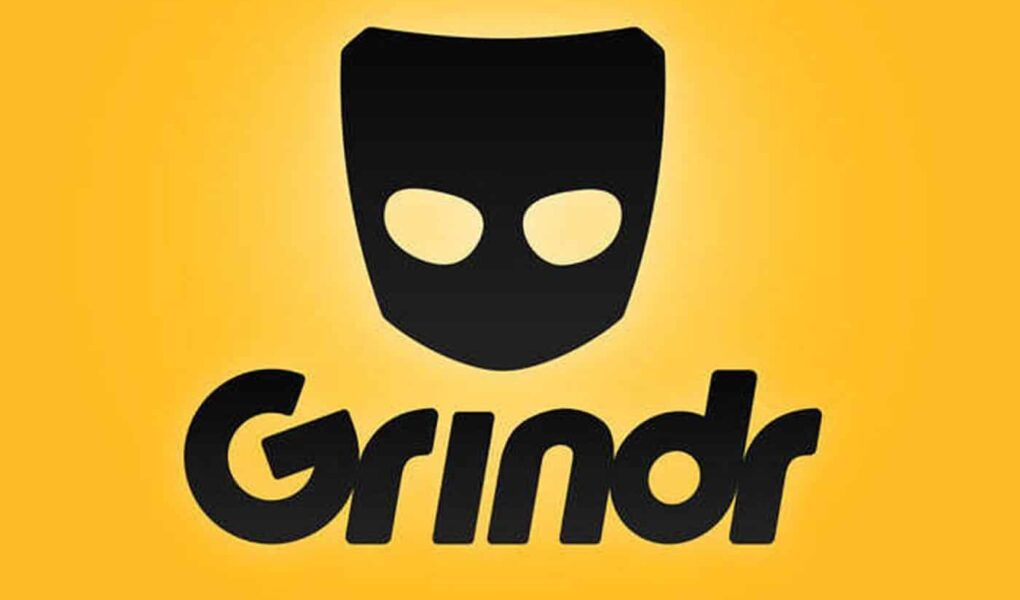In the ever-evolving landscape of digital connection, few platforms have made a mark quite like Grindr. Launched in 2009, this pioneering app redefined the way LGBTQ+ individuals network and interact, transforming the sometimes solitary experience of dating into an accessible and vibrant community. But what motivated its creation, and how did it resonate so profoundly with users around the globe? This article delves into the origins of Grindr—the story behind its release date, the vision of its founders, and the societal context that paved the way for a revolutionary change in the dating arena. Join us as we explore the journey of this iconic app and its lasting impact on relationships and self-expression in the modern age.
Table of Contents
- Exploring the Origins of Grindr and its Impact on Online Dating
- Key Features that Revolutionized Connection for the LGBTQ+ Community
- Understanding the Evolution of Grindr Through User Feedback
- Recommendations for Navigating Grindr Safely and Effectively
- Q&A
- Wrapping Up
Exploring the Origins of Grindr and its Impact on Online Dating
The inception of Grindr in March 2009 marked a significant turning point in the landscape of online dating, particularly for the LGBTQ+ community. This pioneering app was developed by Joel Simkhai, who sought to create a platform where users could connect with one another based on location, fundamentally changing the way people meet and interact. What set Grindr apart from other dating platforms was its emphasis on immediacy and physical proximity, allowing users to swipe through potential matches in real-time. By utilizing geolocation technology, Grindr not only fostered connections but also helped to cultivate a sense of community among users.
Over the years, the impact of Grindr has been profound, influencing how romance, relationships, and social engagement are navigated in the digital age. Some key aspects of Grindr’s impact include:
- Accessibility: Users can easily connect with others in their vicinity, breaking geographic barriers.
- Empowerment: For many, Grindr has provided a space for self-expression and exploration of sexual identity.
- Norm-setting: The app has influenced cultural norms around dating, sex, and consent within the LGBTQ+ community.
- Inclusivity: Grindr has evolved to cater to a diverse range of sexual orientations and identities.
Key Features that Revolutionized Connection for the LGBTQ+ Community
The launch of Grindr marked a pivotal moment in enhancing connectivity within the LGBTQ+ community. By utilizing geolocation technology, it allowed users to discover potential matches nearby, transforming the way individuals engage with one another. Not only did this make the process of meeting people simpler and more accessible, but it also fostered a newfound sense of belonging for many. The app’s user-friendly interface encourages open conversations, which is crucial for creating authentic connections.
Grindr introduced several features that underscored inclusivity and safety, crucial for a marginalized community. Among them are:
- Community Filters: Users can specify preferences and interests, making it easier to find like-minded individuals.
- Profile Verification: Enhancing user safety by allowing individuals to verify their accounts, which helps in reducing catfishing and fostering genuine interactions.
- Location-Based Matching: Users can search for matches within a specific distance, allowing for spontaneous real-life meetups.
| Feature | Description |
|---|---|
| Chat Functionality | Instant messaging capabilities promote quick and easy communication. |
| Event Promotion | Users can discover LGBTQ+ events, fostering community engagement. |
| Block & Report Features | Tools to enhance user safety and maintain a respectful environment. |
Understanding the Evolution of Grindr Through User Feedback
Grindr’s journey from its inception to the dynamic platform it is today has been heavily influenced by user feedback. The app was first released in 2009, rapidly gaining popularity among the LGBTQ+ community for its straightforward approach to connecting users. Early feedback highlighted the necessity for privacy features and enhanced user safety, prompting developers to integrate options like image blurring and location accuracy settings. Consequently, the platform has evolved into a more inclusive space, catering not only to connections but also to community building and advocacy.
The responsiveness to user suggestions led to significant updates that fostered a more engaging environment. Among these enhancements, the introduction of group chats, profile verification, and block lists stood out as transformative features. Moreover, users have continuously shaped the app’s aesthetic and functionality through their requests for improved navigation and personalization options. To illustrate Grindr’s progression, here’s a brief comparison of some pivotal updates over the years:
| Year | Key Update |
|---|---|
| 2009 | Initial Launch |
| 2011 | Introduction of Location-Based Features |
| 2013 | Launch of Profile Verification |
| 2016 | Enhanced Security Features |
| 2020 | Group Chats and Video Calling |
Recommendations for Navigating Grindr Safely and Effectively
When diving into the world of Grindr, safety should be your top priority. To ensure a more secure experience, consider the following practices:
- Protect Your Privacy: Always use a nickname rather than your full name. Avoid shared personal details like your home address or workplace.
- Set Boundaries: Clearly communicate your comfort levels regarding sharing photos or meeting in person. Trust your instincts and don’t feel pressured to engage beyond your comfort zone.
- Meet in Public: If you decide to meet someone, choose a public place where you feel safe. Always inform a friend of your plans.
In addition to safety, it’s essential to maximize your experience on the app. Here are some effective strategies to consider:
- Be Clear in Your Profile: Craft a profile that reflects your interests and what you seek. Authenticity attracts like-minded individuals.
- Use Filters Wisely: Take advantage of the app’s filtering options to find people who align with your preferences without overwhelming yourself with unnecessary messages.
- Engage Meaningfully: When messaging, be respectful and engaging. A thoughtful approach can lead to more rewarding interactions.
Q&A
Q&A: The Grindr Journey – A Look into Its Release Date
Q1: What is Grindr?
A1: Grindr is a popular dating app designed specifically for the LGBTQ+ community, particularly gay, bisexual, transgender, and queer individuals. Launched in 2009, Grindr revolutionized the way people connect in real time, allowing users to find and meet others in their vicinity.
Q2: When was Grindr first launched?
A2: Grindr made its official debut on March 25, 2009. Developed by Joel Simkhai, the app quickly gained traction, becoming the first mobile application to utilize geolocation technology in the realm of dating.
Q3: What was the initial concept behind Grindr?
A3: The original concept of Grindr was rooted in creating a safe and convenient space for LGBTQ+ individuals to meet and connect. By harnessing GPS technology, the app allowed users to discover potential matches nearby, fostering a sense of community and enabling spontaneous interactions.
Q4: How has Grindr evolved since its release?
A4: Since its launch, Grindr has undergone significant transformations, including updates to its user interface, privacy features, and additional functionalities. It now includes features like video calls, group chats, and enhanced profile options, catering to the diverse needs of its users.
Q5: Did Grindr face any challenges after its release?
A5: Yes, like many pioneering platforms, Grindr faced its share of challenges, including concerns about user safety, data privacy, and the potential for misuse. The company has taken steps to address these issues, implementing safety features and prioritizing user education.
Q6: What impact has Grindr had on the LGBTQ+ community?
A6: Grindr has had a profound impact on the LGBTQ+ community by providing a platform for connection and visibility. It has facilitated countless relationships and friendships, served as a crucial resource for individuals seeking support, and contributed to advancements in LGBTQ+ representation in digital spaces.
Q7: Is Grindr available worldwide?
A7: Yes, Grindr is accessible in many countries around the globe. However, in some regions, the app faces restrictions due to political and cultural opposition to LGBTQ+ rights, impacting its availability and functionality.
Q8: What’s next for Grindr?
A8: As Grindr continues to evolve, it aims to enhance user experience, expand its safety measures, and embrace innovations in technology. The company is committed to fostering inclusivity and staying aligned with the ever-changing needs of the LGBTQ+ community.
Q9: How has the app influenced the broader conversation around dating apps?
A9: Grindr’s success has sparked conversations about the role of technology in romantic and social interactions, pushing other dating platforms to consider inclusivity and niche markets. It has paved the way for further specialization in the dating app landscape.
Q10: What should new users know before joining Grindr?
A10: New users should familiarize themselves with Grindr’s community standards and safety tips. Respecting others and ensuring personal safety are key. Additionally, it’s beneficial to engage with the app openly and set clear intentions to create meaningful connections.
Wrapping Up
As we navigate the ever-evolving landscape of digital dating, the significance of a platform like Grindr cannot be overstated. Since its release, Grindr has revolutionized how individuals connect, fostering a sense of community and facilitating diverse interactions across the globe. Reflecting on its journey from a niche application to a mainstream phenomenon, it becomes clear that the launch of Grindr marked a pivotal moment in the realm of online relationships. As we look to the future, it will be intriguing to see how this platform continues to adapt and innovate in response to the changing dynamics of love, friendship, and everything in between. Whether you’re a seasoned user or someone contemplating your first interaction, the legacy of Grindr’s release remains a vital chapter in the story of modern connection.



